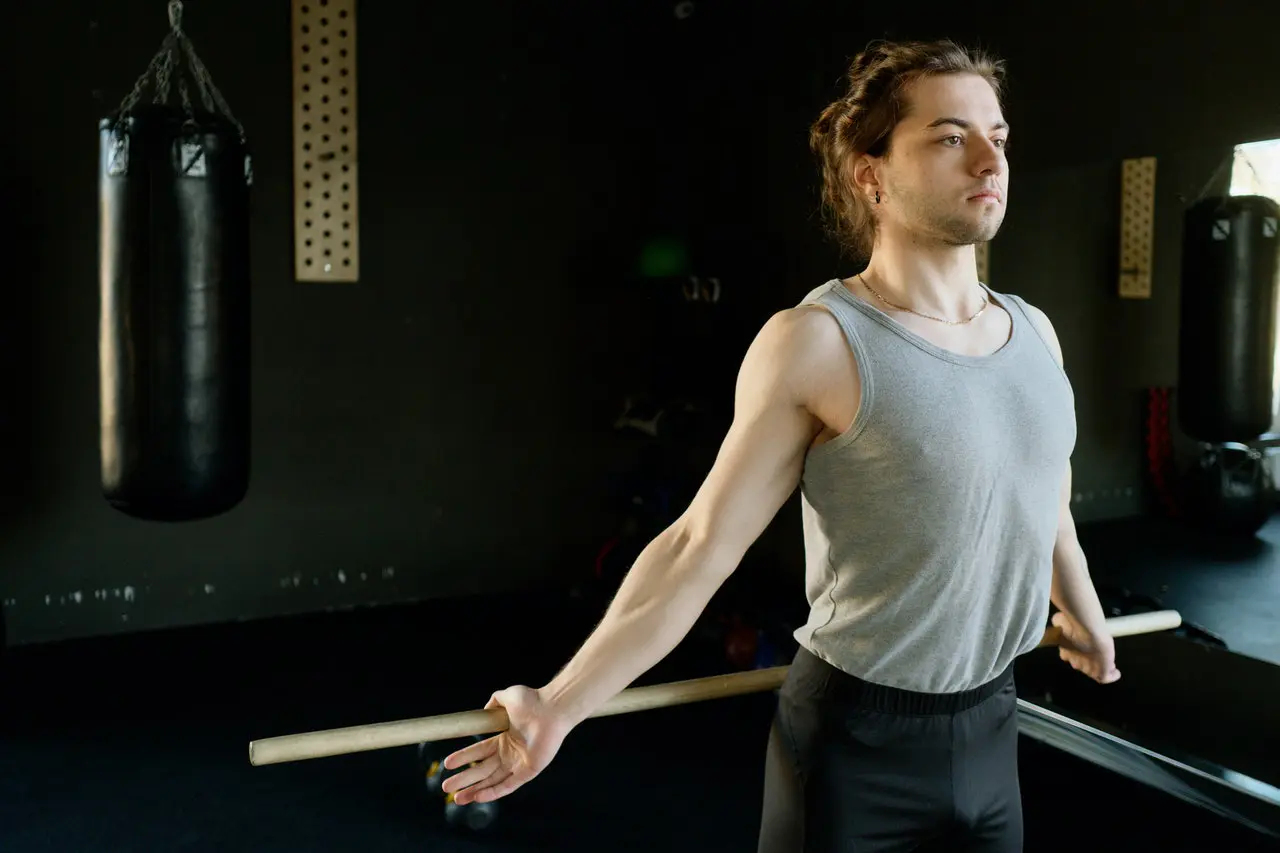
The best online fitness resource you'll ever need. We filter out the BS to ensure you meet your health and fitness goals!

The best online fitness resource you'll ever need. We filter out the BS to ensure you meet your health and fitness goals!

A lack of shoulder mobility is one of the more commonly found problems that physiotherapists, personal trainers and coaches alike come across with those with whom they are working. It can be attributed to various underlying conditions, and can cause a great deal of inconvenience, discomfort and pain.
In athletes, a lack of shoulder mobility can greatly impair performance. For example, it can preclude the inclusion of certain exercises in a bodybuilding or weightlifting routine- overhead presses, front squats, or really any barbell exercise that requires a rack position will all be made more difficult or even completely unattainable by a lack of shoulder mobility. Anybody using upper body movements in their sport- such as throwing in basketball or rugby, or those looking to climb, or even perform a simple front crawl in the swimming pool- will see their performance dimmish.
If you suffer from shoulder immobility or pain, you should seek advice from your healthcare provider. However, most forms of shoulder mobility issues can benefit from a handful of exercises. These will work you through, and open you up to, a full range of motion, pain free and easily. Mobility concerns can also be prevented using them, so they’re well worth including in your mobility drills or warm-ups regardless of your current shoulder health.
All you need for the five following exercises is a broomstick, rake, mop, pipe, or anything else with a long, slim handle or pole. These five broomstick exercises will take your shoulder through its full range of motion, increasing it over time to improve comfort and performance.
As above, all you need is a long pole or something with a long handle. These are all accordingly commonly referred to as broomstick stretches. Whatever you go with, make sure it’s sturdy enough to support the tension that some of these stretches rely upon- a hollow length of PVC may well bend or snap.
Use all of these exercises either as a warmup before training your upper body or as part of a regular mobility routine.
This is particularly good for those who have one shoulder that is particularly immobile. Hold the broomstick in both hands, palms facing your body. Begin with the broomstick at shoulder height, then slowly raise both arms up, keeping the elbows straight. Use your good arm to assist in bringing the other one up. See how high you can come, hold it for a couple of breaths and then lower. Repeat 10 times.
This is a tough one- range of motion isn’t expected to be too great with it. Hold the broomstick behind your back with your knuckles facing forwards. Slowly raise the stick upwards and away from your lower back. Hold at the furthest point for a couple of breaths and then lower. Repeat 10 times.
Alternatively, this exercise can be performed without a stick. Simply interlace your fingers, raise your chest and try to move your hands up and away from your butt. Again, hold at the furthest point for a couple of breaths and then lower. Repeat 10 times.
Hold the broomstick in both hands with your palms facing forwards. For some, this may be a stretch enough. If it is, just hold for a few seconds at a time. Progress when you are able. However, if you can, use your good arm to bring your injured shoulder up to 90 degrees, or as close as possible. If both arms are injured or have poor mobility, consider taking an overhand grip with one hand, using this arm to raise, before switching. If you’re using this for prevention, simply alternate sides with an underhand grip.
Hold each raise for a couple of breaths and then lower. Repeat 10 times.
This exercise is best performed lying down. Hold the broomstick in front of your body with your palms facing upwards, elbows at 90 degrees and your upper arms resting on the floor. From here, use your good arm to swing your injured arm away from your body, whilst keeping the elbow of the injured arm by your side.
For prevention, work each side evenly.
Hold each for a couple of breaths and then repeat 10 times on both sides.
Hold the broomstick behind your back, in both hands, with your uninjured shoulder behind your head. Keep the hand on your injured side at waist level behind your back. If both shoulders are injured, this may be uncomfortable at the beginning, but try to work both sides. If you’re using this for prevention, simply perform on both sides evenly.
Move the broomstick up and down behind your back by bending your elbows, in something of a flossing motion. Assist the motion using your top arm, especially if it is uninjured. Move up and down 10 times, exploring as wide a range of motion as possible, then hold at the top for a few breaths.
As mentioned above, these are great stretches and drills to be used as preventative care or as part of a proper physiotherapy recovery program. However, they should not replace medical intervention. Always conduct your doctor or physiotherapist about any symptoms that are concerning you.
If any of these exercises hurt, pull back from your full range of motion.